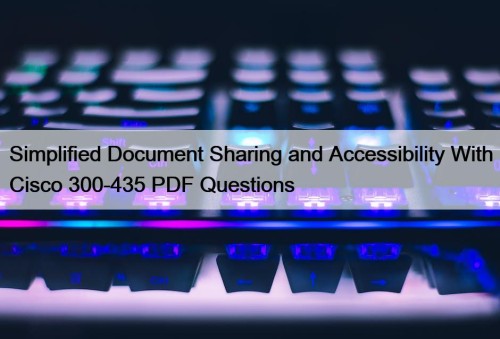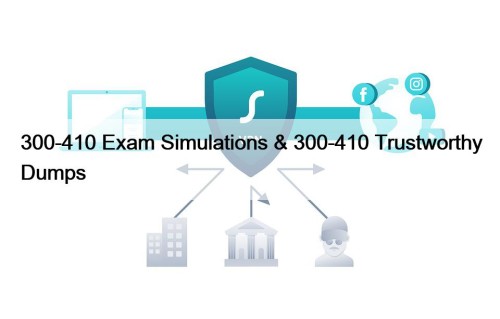Most Popular
 Simplified Document Sharing and Accessibility With Cisco 300-435 PDF Questions
Simplified Document Sharing and Accessibility With Cisco 300-435 PDF Questions
BONUS!!! Download part of Real4Prep 300-435 dumps for free: https://drive.google.com/open?id=12lV_gWtjVIJTMjdkS87NaUipX9QG4Ve3The ...
 Pass Guaranteed 2025 C-AIG-2412: Unparalleled Exam SAP Certified Associate - SAP Generative AI Developer Quizzes
Pass Guaranteed 2025 C-AIG-2412: Unparalleled Exam SAP Certified Associate - SAP Generative AI Developer Quizzes
Constant improvements are the inner requirement for one person. As ...
 300-410 Exam Simulations & 300-410 Trustworthy Dumps
300-410 Exam Simulations & 300-410 Trustworthy Dumps
BONUS!!! Download part of Lead1Pass 300-410 dumps for free: https://drive.google.com/open?id=1uCmOaHjYzK_JIVbhuq-GlO4R-VFEvUDBSelect ...



Cisco 200-201 Exam | 200-201 Valid Exam Online - Updated Download Exam 200-201 Answers

The 200-201 exam requires a lot of preparation, hard work, and practice to be successful. To pass the Understanding Cisco Cybersecurity Operations Fundamentals (200-201) test, you need to get updated Cisco 200-201 dumps. These 200-201 questions are necessary to study for the test and pass it on the first try. Updated 200-201 Practice Questions are essential prepare successfully for the Understanding Cisco Cybersecurity Operations Fundamentals certification exam. But gaining access to updated 200-201 questions is challenging for the candidates.
Cisco 200-201 (Understanding Cisco Cybersecurity Operations Fundamentals) Certification Exam is designed to validate the knowledge and skills of professionals who are responsible for identifying, detecting, and responding to cybersecurity incidents. 200-201 Exam is ideal for individuals who are interested in pursuing a career in the cybersecurity industry or for those who want to enhance their existing skills in this field.
>> 200-201 Valid Exam Online <<
Pass Guaranteed Quiz Cisco - 200-201 - Understanding Cisco Cybersecurity Operations Fundamentals –Valid Valid Exam Online
We have created a number of reports and learning functions for evaluating your proficiency for the 200-201 exam dumps. In preparation, you can optimize Cisco 200-201 practice exam time and question type by utilizing our Cisco 200-201 Practice Test software. PDF4Test makes it easy to download Understanding Cisco Cybersecurity Operations Fundamentals (200-201) exam questions immediately after purchase.
Cisco Understanding Cisco Cybersecurity Operations Fundamentals Sample Questions (Q272-Q277):
NEW QUESTION # 272
Refer to the exhibit.
What is the potential threat identified in this Stealthwatch dashboard?
- A. A host on the network is sending a DDoS attack to another inside host.
- B. There are two active data exfiltration alerts.
- C. A policy violation is active for host 10.201.3.149.
- D. A policy violation is active for host 10.10.101.24.
Answer: B
NEW QUESTION # 273
What is the dataflow set in the NetFlow flow-record format?
- A. Dataflow set provides basic information about the packet such as the NetFlow version
- B. Dataflow set is a collection of HEX records.
- C. Dataflow set is a collection of data records.
- D. Dataflow set is a collection of binary patterns
Answer: C
Explanation:
In the NetFlow flow-record format, a dataflow set is a collection of data records that follow the template FlowSet in an export packet. Each data record corresponds to a flow and contains values for the fields defined in the template FlowSet. This allows for efficient organization and retrieval of flow information by NetFlow collectors.
Reference:
Understanding Cisco Cybersecurity Operations Fundamentals (CBROPS)
NetFlow Version 9 Flow-Record Format Documentation
NEW QUESTION # 274
Which evasion technique is a function of ransomware?
- A. resource exhaustion
- B. encryption
- C. encoding
- D. extended sleep calls
Answer: B
Explanation:
Section: Security Concepts
NEW QUESTION # 275
What is a comparison between rule-based and statistical detection?
- A. Statistical is based on measured data while rule-based uses the evaluated probability approach.
- B. Rule-based uses data known beforehand and statistical is based on assumptions.
- C. Statistical uses the probability approach while rule-based Is based on measured data.
- D. Rule-based Is based on assumptions and statistical uses data Known beforehand.
Answer: B
Explanation:
* Rule-based detection methods rely on predefined rules and patterns that are known beforehand. These rules are created based on prior knowledge of what constitutes normal and abnormal behavior.
* Statistical detection, on the other hand, involves analyzing data to identify anomalies. It is based on assumptions about what normal behavior looks like and uses statistical methods to detect deviations from this norm.
* Rule-based systems are typically straightforward but may miss novel attacks that do not match existing rules.
* Statistical methods can detect previously unknown threats by recognizing patterns that deviate from established baselines but may produce more false positives.
References
* Intrusion Detection Systems (IDS) Concepts
* Comparative Studies on Rule-based and Statistical Anomaly Detection
* Understanding Anomaly Detection in Network Security
NEW QUESTION # 276
Refer to the exhibit.
What is the potential threat identified in this Stealthwatch dashboard?
- A. A host on the network is sending a DDoS attack to another inside host.
- B. There are two active data exfiltration alerts.
- C. A policy violation is active for host 10.201.3.149.
- D. A policy violation is active for host 10.10.101.24.
Answer: B
Explanation:
The exhibit shows a Stealthwatch dashboard displaying information on alarming hosts, alarms by type, and today's alarms. On the left side under "Top Alarming Hosts," there are five host IP addresses listed with their respective categories indicating different types of alerts including 'Data Hoarding' and 'Exfiltration.' In
"Alarms by Type" section at center top part of image shows bar graphs representing various alarm types including 'Crypto Violation' with their respective counts. On right side under "Today's Alarms," there's a table showing the details of each alarm such as the host IP, the alarm type, the severity, and the time. The potential threat identified in this dashboard is that there are two active data exfiltration alerts, one for host
10.201.3.149 and another for host 10.10.101.24. Data exfiltration is the unauthorized transfer of data from a compromised system to an external destination, such as a command and control server or a malicious actor.
This can result in data loss, breach of confidentiality, and damage to the organization's reputation and assets. References := Cisco Cybersecurity Operations Fundamentals - Module 7: Network and Host Forensics
NEW QUESTION # 277
......
We hope that you can use your time as much as possible for learning on the 200-201 practice questions. So we have considered every detail of the 200-201 study guide to remove all unnecessary programs. If you try to downoad our 200-201 study materials, you will find that they are so efficient! And even you free download the demos on the website, you can feel the convenience and efficiency. It is simple and easy to study with our 200-201 learning braindumps.
Exam 200-201 Answers: https://www.pdf4test.com/200-201-dump-torrent.html
- Reliable 200-201 Dumps Pdf 🧮 Test 200-201 Sample Online 👒 200-201 Exam Torrent 🛸 Go to website [ www.vceengine.com ] open and search for ▷ 200-201 ◁ to download for free 🎑Latest 200-201 Exam Question
- Reliable 200-201 Exam Preparation 🤪 200-201 Valid Test Braindumps 👄 New 200-201 Exam Online 🌾 Search for 【 200-201 】 and download it for free immediately on ➽ www.pdfvce.com 🢪 🔽Valid 200-201 Exam Labs
- 200-201 Latest Exam Practice ⚔ Valid 200-201 Exam Labs 🔥 Exam 200-201 Topics 💳 Search for ➥ 200-201 🡄 and download it for free immediately on ➽ www.real4dumps.com 🢪 🧖200-201 Training Courses
- Exam 200-201 Topics 🌸 Test 200-201 Sample Online 🧆 200-201 Latest Exam Practice 🍏 Search for ➠ 200-201 🠰 and obtain a free download on { www.pdfvce.com } 🤚Guaranteed 200-201 Questions Answers
- Latest 200-201 Exam Question 🏳 Reliable 200-201 Exam Preparation ⚔ 200-201 Training Courses 🥂 Enter 「 www.prep4sures.top 」 and search for ➡ 200-201 ️⬅️ to download for free ❓200-201 Valid Test Braindumps
- Exam 200-201 Quick Prep 🎍 Exam 200-201 Quick Prep 😽 200-201 Training Courses 🦊 ▶ www.pdfvce.com ◀ is best website to obtain ⏩ 200-201 ⏪ for free download 🧂New 200-201 Exam Online
- Exam 200-201 Quick Prep 🐒 200-201 Flexible Learning Mode 🕒 200-201 Top Questions 💡 Easily obtain ▷ 200-201 ◁ for free download through ( www.passcollection.com ) 💮200-201 Top Dumps
- Latest 200-201 Exam Question ⏹ New 200-201 Exam Online 👖 New 200-201 Exam Online 🍢 Search for ☀ 200-201 ️☀️ and download exam materials for free through [ www.pdfvce.com ] 🔷200-201 Valid Dumps Ebook
- Efficient 200-201 Valid Exam Online for Real Exam 🐦 Search for 「 200-201 」 and obtain a free download on ➥ www.lead1pass.com 🡄 🕣200-201 Latest Exam Practice
- Pass Guaranteed Quiz 2025 Pass-Sure 200-201: Understanding Cisco Cybersecurity Operations Fundamentals Valid Exam Online ➰ Search for ▛ 200-201 ▟ and download exam materials for free through ⇛ www.pdfvce.com ⇚ 🍆Guaranteed 200-201 Questions Answers
- 200-201 Latest Exam Practice 🚻 200-201 Exam Price 🤟 Test 200-201 Sample Online 💲 Search on ▷ www.dumpsquestion.com ◁ for ⮆ 200-201 ⮄ to obtain exam materials for free download 🐲Exam 200-201 Quick Prep
- 200-201 Exam Questions
- www.englishforskateboarders.com course.parasjaindev.com mediaidacademy.com englishsphereonline.com brightstoneacademy.com ihomebldr.com academy.caps.co.id training.autodetailing.app digitalmarketingacademys.com namsa.com.pk
Tags: 200-201 Valid Exam Online, Exam 200-201 Answers, Reliable 200-201 Exam Testking, Valid 200-201 Practice Materials, 200-201 Dumps Questions